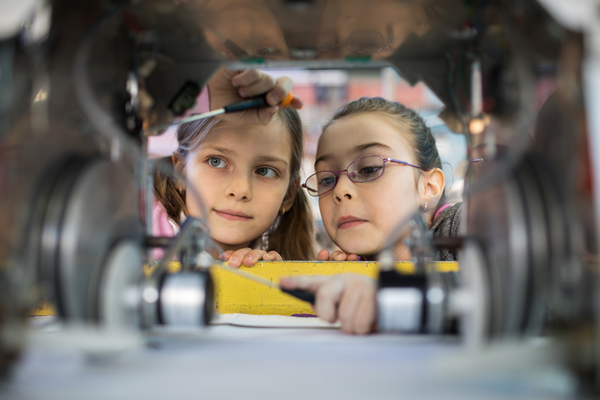BEST PRACTICE AND PROFESSIONAL DEVELOPMENT
Audience: Network Staff and Partners
Application: Share the following best practices and tools
with partners and use them to create professional development for programs in
your state.
Article: Building Culturally Competent Organizations –
Learn how you can build a culturally competent organization. A resource
developed by the University of Kansas.
Article: Are you culturally competent? Responding to Kids’
Diverse Backgrounds and Experiences – Find out what it
means to be culturally competent in afterschool and learn specific strategies
you can apply in your setting.
Article: Do I belong? Gender, Peer Groups, and STEM
Achievement – This paper reviews how peer groups can
hinder or help girls’ and women’s sense of belongingness in STEM.
Article: Tackling Implicit Bias –
Description of implicit bias, its impact and how to challenge it.
Podcast: Seeing
White – A 14-episode series about race from Duke
University for anyone invested in increasing STEM equity.
BEST PRACTICE AND PROFESSIONAL DEVELOPMENT
Audience: Program Leaders and Staff
Application: Share the following best practices and tools
with program leaders and staff in your state.
ToolKit: A Guide to Equity and Antiracism for Educators –
A toolkit with links to additional resources related to current events and a
guide for educators on how to fight racism in their communities.
Videos: Culturally Responsive: Educator Mindset and Action –
Short videos of educators that describe what it means to have a culturally
responsive mindset with examples of specific culturally responsive practices in
action.
Personal Reflection: Test Yourself for Hidden Bias –
Information about stereotypes and prejudices and the impact they have on
students. It includes a link to “Project Implicit”, a test to
identify your implicit biases.
Research: Focusing on Cultural Competency in STEM
Education – White paper that provides an overview of
cultural competency in STEM education. It describes: a) stages and steps of
cultural competency, b)culturally responsive teaching practices, and c)
strategies for developing a culturally responsive out-of-school STEM program.
Video: Gloria Ladson-Billings Reframes the Racial
Achievement Gap – G. Ladson -Billings gave a talk at
the 2007 Urban Sites Network Conference in Washington D.C. where she discusses
the term “racial achievement gap” as a construct that considers
students as defective and lacking. Instead, she says to approach the
achievement gap with a “debt-mindset” instead of a
“deficit-mindset” that emphasizes that the achievement gap is complex
and systemic.
ADDITIONAL VIRTUAL PROFESSIONAL DEVELOPMENT: Connecting Programs
Audience: Partners and Programs
Application: Are partners looking for additional virtual
professional development opportunities to build their understanding of an
engineering mindset and equity in STEM?
Recorded Webinar: Equity in STEM Education: The Connection
to Culture – When you think about diversity; how does
it show itself? When you stand before your students, do the faces looking back
at you look like your own? Most likely your answer is “no”. Classrooms, and
out-of-school time programs are becoming more culturally, ethnically, and
linguistically diverse, which is leading to both challenges and opportunities
for educators. Join the National Girls Collaborative Project to learn about
research-based best practices on cultural responsiveness. A powerful approach
that spans the cultural divide that often exists between educators and students
and allows educators to improve STEM engagement and equity.
